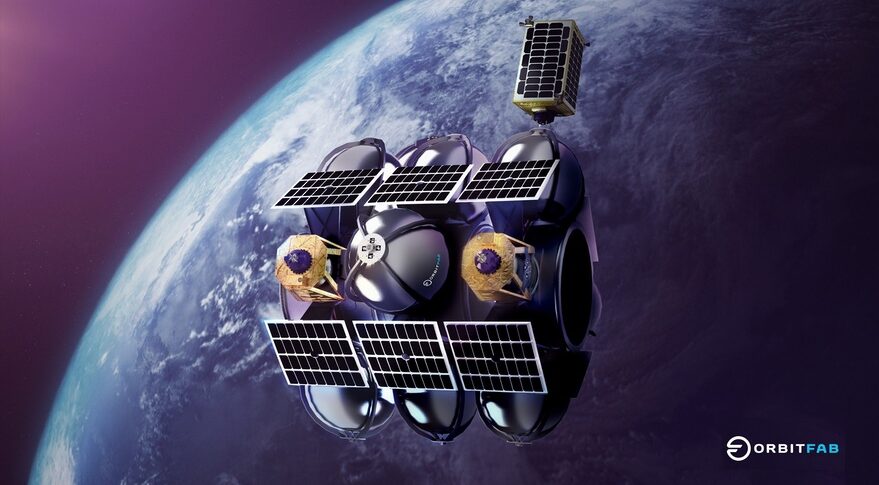Russia escalates rhetoric on commercial satellites, calls them ‘legitimate targets for retaliation’ - SpaceNews

A Russian official said commercial space systems "may become a legitimate target for retaliation.”
WASHINGTON — A Russian official speaking at a United Nations meeting on outer space security, criticized Western nations’ use of commercial satellites in military operations, adding fuel to previous declarations that Russia could target space networks operated by private companies.
Konstantin Vorontsov, deputy director of the Russian foreign ministry’s department for non-proliferation and arms, called the West’s use of commercial satellites “an extremely dangerous trend that … has become apparent during the latest developments in Ukraine.”
He said that commercial systems as “quasi-civilian infrastructure may become a legitimate target for retaliation.”
Russia in recent months has aimed its wrath at SpaceX’s internet satellite network Starlink, which has served as a communications lifeline for the Ukrainian military. Meanwhile, U.S. defense and intelligence agencies have increasingly relied on commercial imaging satellites to monitor the conflict.
The aggressive rhetoric from Russia comes as the Pentagon plans to increase its use of commercial space services and considers how it might compensate companies if their spacecraft are damaged during an armed conflict.
U.S. Vice Chief of Space Operations Gen. David “DT” Thompson, speaking at a conference Oct. 25, said these conversations are gaining momentum.
For many years the U.S. military in strategic space wargames recognized that commercial vendors would play a role in a future conflict. “For a long time, we have worked on ideas and concepts of what it meant to be a commercial operator in a scenario like that, a military service depending on commercial capabilities, and we’ve also exercised it in real time,” Thompson said at a Mitchell Institute for Aerospace Studies conference.
However, all this wargaming was “theoretical and academic as you don’t know exactly what the real world would look like,” he added.
Since Russia’s invasion of Ukraine, “let’s just say that the conversation between us and our allies and partners in the commercial sector has picked up a sense of urgency, and a better understanding of what it might really look like based on what’s happened in Ukraine,” Thompson said.
“Commercial companies generally are interested in where their limits are, where their capabilities are, how they can contribute, but at the same time, in how they can be protected,” he added.
“We’ve been working on this for a long time, but I will tell you, Russia and Ukraine has changed the perspective based on the real world.”
U.S. national defense strategy calls for ‘resilient, redundant’ space networks

WASHINGTON — The unclassified version of the U.S. national defense strategy released by the Defense Department Oct. 27 forecasts a decades-long competition with China and lays out priorities for the military going forward.
In the introduction to the strategy, Defense Secretary Lloyd Austin says China “remains our most consequential strategic competitor for the coming decades.” Meanwhile, the United States will continue to respond to Russia’s “reckless invasion of Ukraine” and support efforts by the NATO alliance.
With regard to outer space, the strategy warns that China and other rivals are likely to target U.S. satellites in a conflict in order to cripple the military’s access to critical services, and calls for greater use of commercial space technologies to enhance U.S. defense.
“Because the cyber and space domains empower the entire force, we will prioritize building resilience in these areas,” says the strategy.
The document validates the Pentagon’s plan to build a multi-layer network of missile-defense and missile-tracking satellites, and to supplement military space networks with commercial systems.
DoD will “reduce adversary incentives for early attack by fielding diverse, resilient and redundant satellites constellations .. and we will bolster our ability to fight through disruption by improving defensive capabilities and increasing options for reconstitution.”
The strategy says DoD “will increase collaboration with the private sector in priority areas, especially with the commercial space industry, leveraging its technological advancements and entrepreneurial spirit to enable new capabilities.”
The Pentagon also included in the document the unclassified nuclear posture review and missile defense review. “By weaving these documents together, the entire Department is matching resources to goals,” DoD said.
The national defense strategy is a companion document to the broader national security strategy the White House released Oct. 12.
Orbit Fab secures new investor to support satellite refueling efforts

LAS VEGAS — Orbit Fab, a startup developing infrastructure for in-space refueling of satellites, announced Oct. 25 it lined up a new investor to support those plans.
Orbit Fab said that 8090 Industries was a “new major investor” in the company, but did not disclose the size of the investment. The company had previously raised a total of $17 million, including more than $10 million in a September 2021 round that included Lockheed Martin Ventures and Northrop Grumman.
8090 Industries bills itself as an investment firm that backs “category-leading industrial giants of tomorrow.” The firm has previously funded startups working on alternative energy technologies, such as those seeking to “decarbonize” heavy industry and transportation, as well as batteries and aviation. It has not previously invested in a space company.
The firm says it partners with more than 20 “industrial leaders” to support its efforts, including the Ozmen family that founded Sierra Nevada Corporation and its space spinoff, Sierra Space.
“We see Orbit Fab as the critical layer of infrastructure for the new in-space economy,” Rayyan Islam, partner at 8090 Industries, said in a statement. “The industry’s future will be built around refueling services, and OrbitFab has a clear path to be the category-defining company to unlock the industrialization of space.”
“We are extremely impressed by the relationship that 8090 Industries has with the world’s leading industrial companies and the aerospace industry in particular. We are already leveraging these connections to help Orbit Fab in our next stage of growth,” Daniel Faber, chief executive and co-founder of Orbit Fab, said in the statement.
Orbit Fab has been developing technologies needed for in-space refueling of spacecraft. That includes the Rapidly Attachable Fluid Transfer Interface, a refueling port for satellites. It also launched last year its first small tanker, Tenzing, to test operations of future tankers for refueling satellites.
The company announced in August it would offer in-space hydrazine refueling at a price of $20 million, starting in 2025. It recently won a $13.3 million contract from the Defense Innovation Unit to supply hydrazine to a Defense Department spacecraft in geostationary orbit in 2025.
Refueling is emerging as a key initial market for the broader satellite servicing industry, given the benefits its offers in extending the life and increasing the maneuverability of satellites.
“Refueling is really a force multiplier,” Faber said in a talk Oct. 20 at the Global Satellite Servicing Forum by the satellite servicing industry group CONFERS. “Simply put, you can reduce costs and increase revenues.”
The cost reductions, he says, come from not having to launch a satellite with all the fuel it needs for its lifetime, instead launching a smaller, less expensive satellite that can be refueled. Revenue increases from a satellite being able to move more quickly to its operational orbit. “You can move faster because fuel is no longer your constraint. You don’t have to worry about taking the most efficient thruster system. You can take the thruster system that can take you to earning money the quickest.”
Refueling is also necessary for more ambitious satellite servicing efforts, such as repairing or upgrading satellites. “To be able to use servicing to its full potential for upgrades, in-space assembly, and those type of things, you need the fuel,” he said. “All the technologies are converging and they’re going to create opportunities that any single one of these things on its own wouldn’t enable.”
.png)















No comments:
Post a Comment